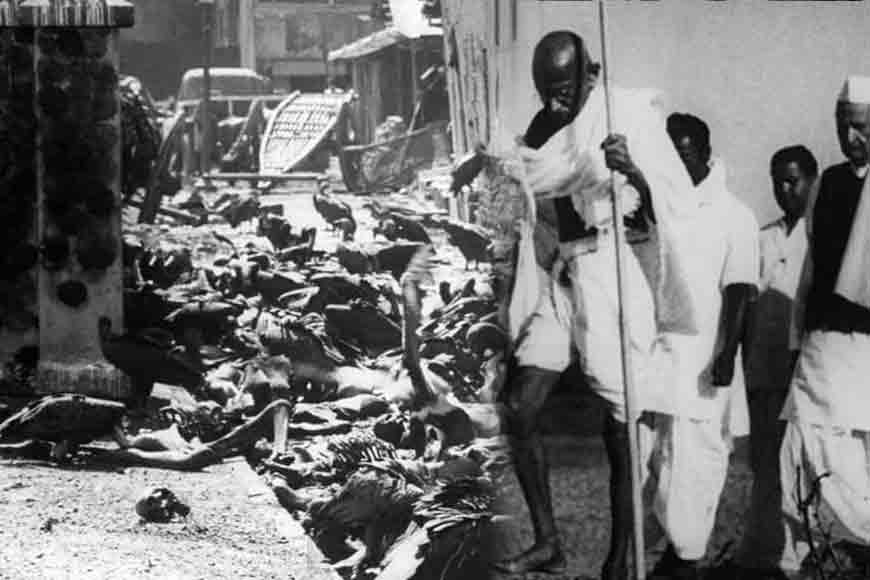Back when the Bengal riots unnerved Mahatma Gandhi - GetBengal story

Mahatma Gandhi fell into ‘darkest despair’ on the eve of India's independence in August 1947. Savage fighting spread from Punjab and the North-West Frontier to Eastern Bengal and Bihar. Brutal violence unleashed a year earlier by Muslim hooligans in Calcutta had triggered Hindu counter attacks and the murder of Muslims in Bengal and Bihar. Mayhem, rape, and murder spread to the villages of Bengal as well, each report inciting more massacres of innocents as communal hatred raged across most of South Asia's subcontinent.
On July 17, 1947, acting on the advice of India’s prime minister-in-waiting, Jawaharlal Nehru, and the consent of Pakistan's governor-general-to-be M. A. Jinnah, Viceroy Lord Mountbatten won his government's final approval to partition Punjab and Bengal along religious lines prior to Great Britain's withdrawal from India. Their plan to carve up British India was never approved of or accepted by Gandhi, however, who realized too late that his closest comrades and disciples were more interested in power than principle, and that his own vision had long been clouded by the illusion that the struggle he led for India's freedom was a nonviolent one.
“Who listens to me today?” a despondent Gandhi muttered. “And why should anyone?” To disillusioned devotees, the Mahatma (Great Soul) freely confessed his ‘bankruptcy,’ admitting that he lived in ‘a fool's paradise.’ Nonetheless, the seventy-seven-year-old little Father (Bapu) of his nation did not surrender to sorrow. Great Soul that he was, Gandhi carried on, passionately ignoring daily threats to his life, refusing to silence his criticism of the government, and rejecting appeals to remain in New Delhi to celebrate the dawn of India's freedom at midnight on the Fifteenth of August 15, 1947. ‘What is there to celebrate?’ This ‘vivisection of the Mother,’ as he called partition, was fit only for prayer and ‘deep heart-searching,’ not for fireworks, proud speeches, and songs.
Gandhi had tried to win Nehru over to his faith in the virtues of simple living, urging his aristocratic Anglophile heir to give up India's democratic throne, abandon the great house he planned to occupy, and instead move into a village hut. He argued: “I believe that if India, and through India the world, is to achieve real freedom, then ... we shall have to go and live in the villages—in huts, not in palaces.” Gandhi feared now that India was approaching its doom, whirling moth like round the hot light of power till its wings would burn. His duty was to save India from that sad fate, though he well understood it might take his last passionate breath. While Delhi draped itself in miles of festive electric lights and the saffron, white, and green bunting of India's bright national flag symbolizing wishful Hindu-Sikh-Muslim unity, Bapu entrained for Bengal on his lonely pilgrimage of prayer for peace.
“What to do?” was the mantra he muttered daily that November as he walked barefoot through the blood-soaked mud of Noakhali District’s scorched villages in Eastern Bengal’s anguished Delta. He had gone there in response to his old Quaker friend Muriel Lester's personal plea, made after she had met Hindu widows who had watched their husbands butchered .‘These women had a dead look,’ Muriel wrote him, a look of ‘utter blankness.’ Gandhi soon saw worse things in Noakhali.
Believing as he did that ‘Truth is God,’ he could not understand how so much he thought true about India turned out to be so violently false.










